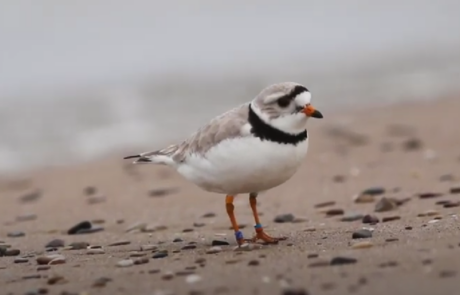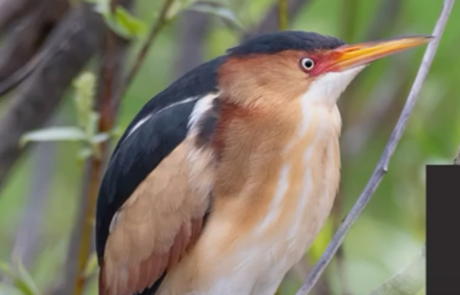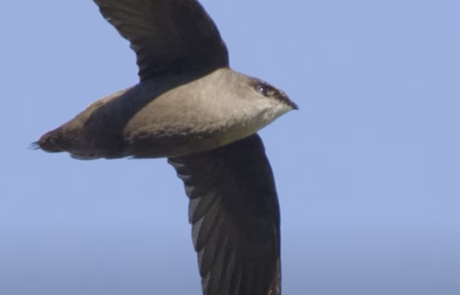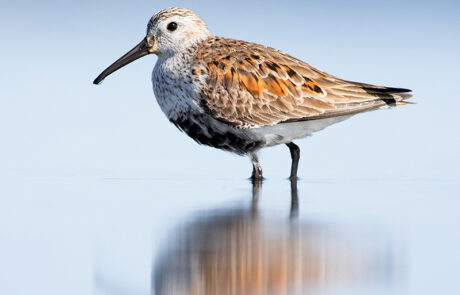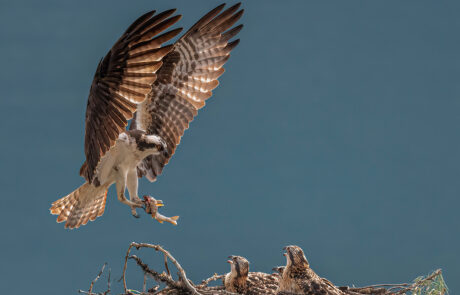Bird Shapes and Sizes
When you are first trying to identify a bird one of the biggest clues will be size and shape. You probably use size and shape when identifying different people from a distance, so why not use it for bird identification too?
There are probably many birds you can already identify simply by size and shape. Take a look at the silhouettes below, and see if you can figure out what type of bird it might be. When you’re ready, mouse over or tap on the image to see the answer. It’s okay if you don’t get it right! This is just an exercise to get your brain thinking about things like posture, body and bill shape.
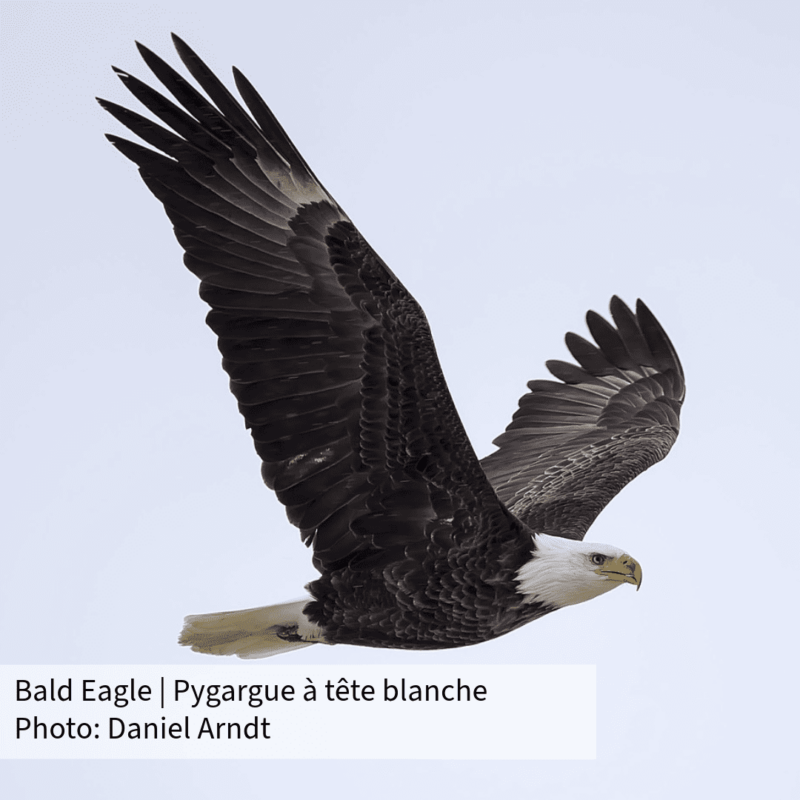
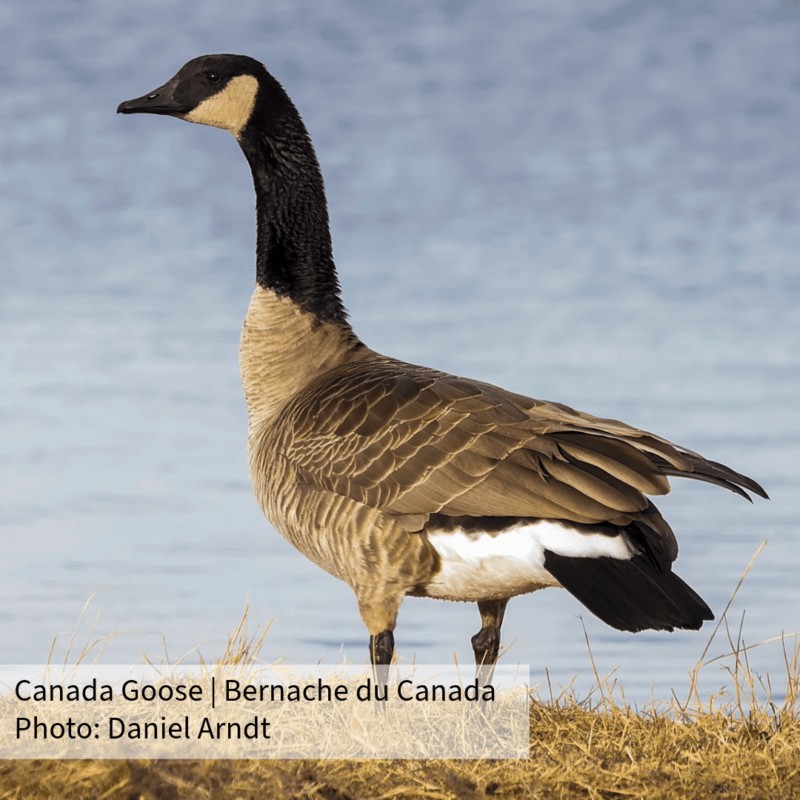
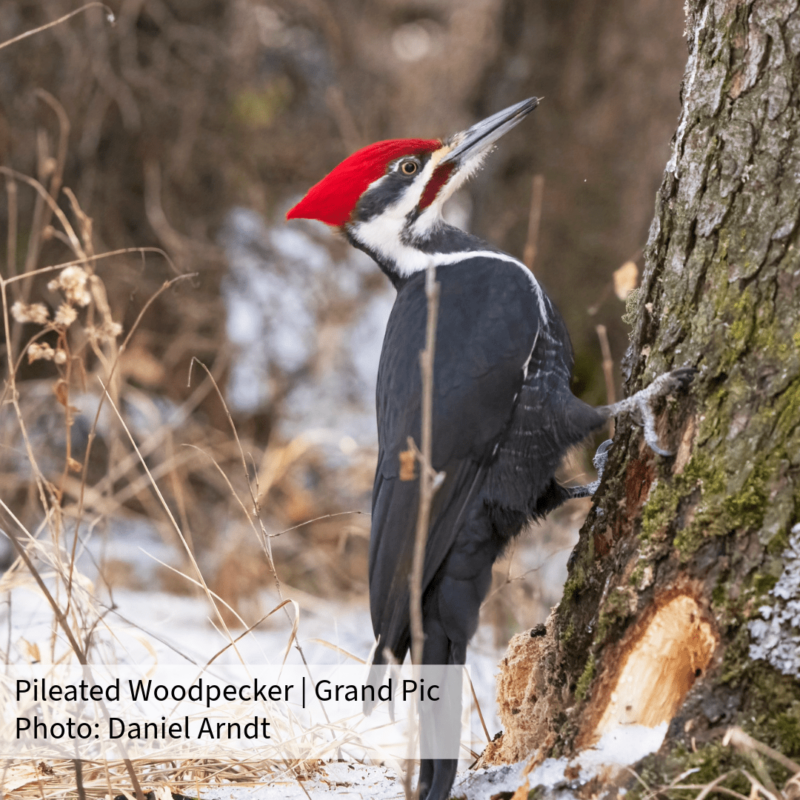
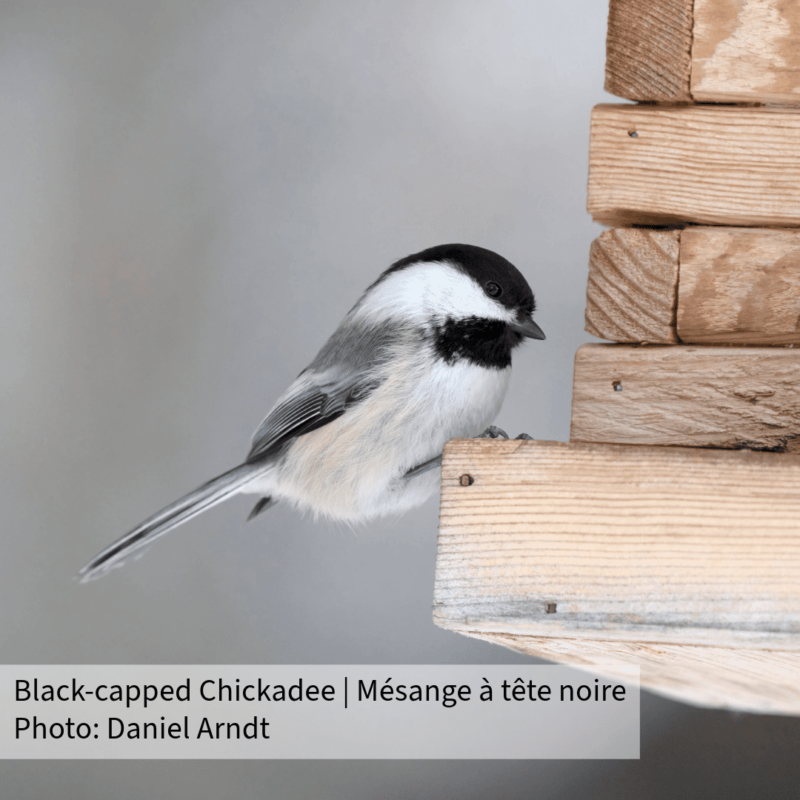
Assessing the size of a bird will often help with identification. We can think about size by comparing the bird to another familiar bird, like a robin or a crow. In the image below, you might be familiar with one or two of these species already (and it’s okay if you’re not!). The ducks with green heads are Mallards, and the larger birds are Canada Geese. How might you describe the third species of bird?
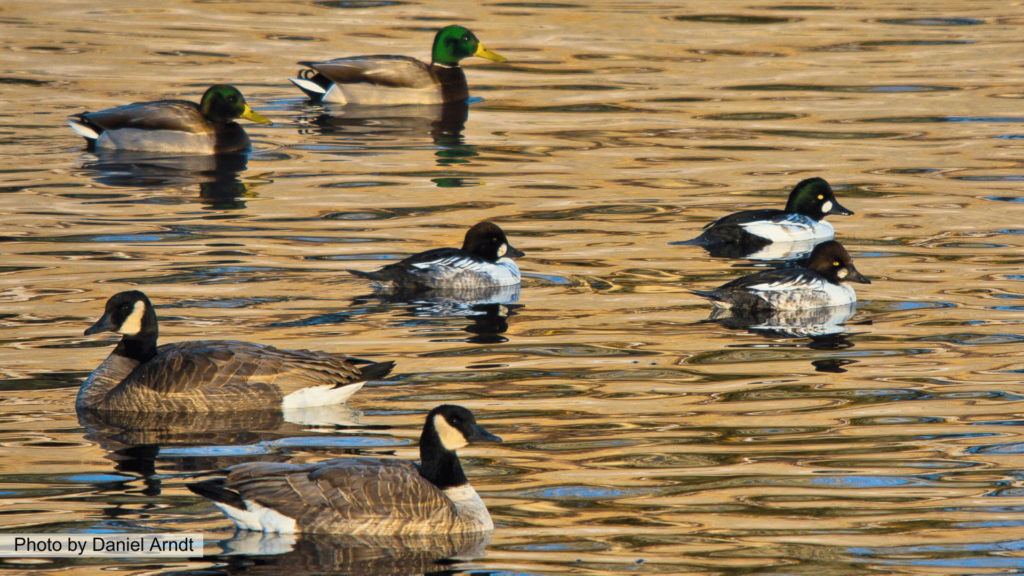
How we might describe it: The third species is a little bit smaller than a Mallard but has a similar body shape. Their beaks are very similar in shape to a Canada Goose. Perfect!
So which bird is it??
A Common Goldeneye. Parks or wetlands with small ponds are perfect places to start birding because many waterfowl species will stay relatively still for a long time, making them easy to view, and easy to compare with other nearby birds.
Another important trick when considering size is to measure the bird against itself. Take a look at this Black-billed Magpie. Notice how the tail is the same length as its body. That’s a long tail! Comparatively, the American Robin tail is around half the length of its body. If you were to see just a silhouette of these two birds, the tail length would be very useful to tell them apart.
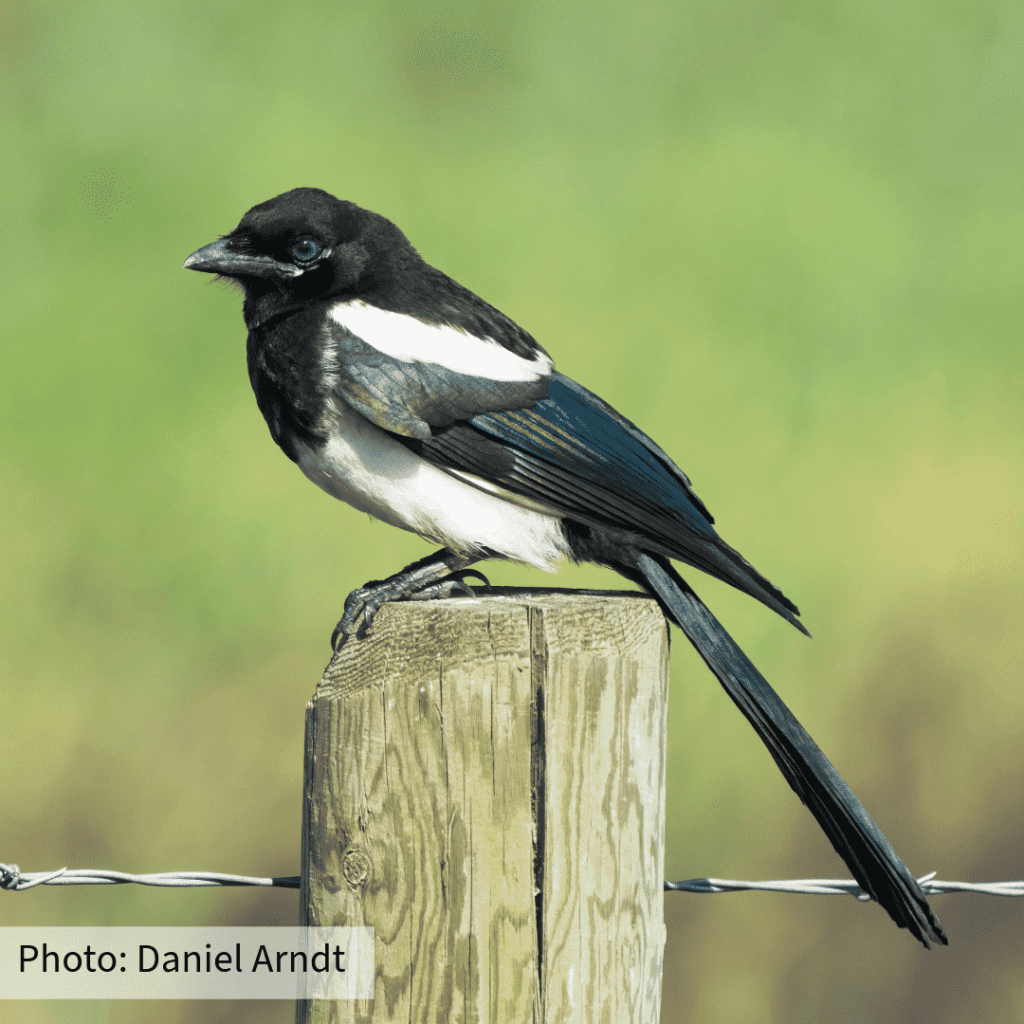
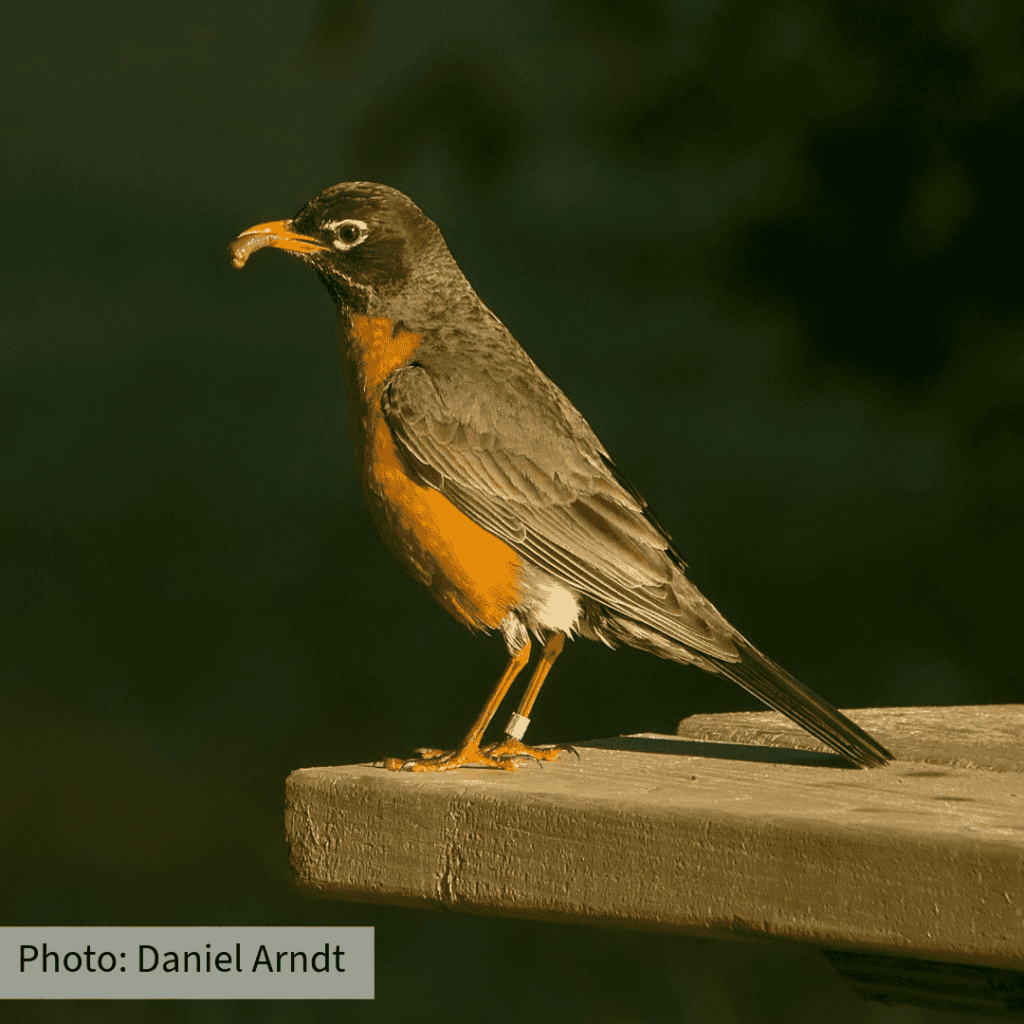
Let’s try this same trick with these familiar backyard birds – the Hairy Woodpecker and Downy Woodpecker!
If you are lucky enough to see these woodpeckers side-by-side, they are easy to tell apart. The Hairy Woodpecker is the bigger of the two. In the photo below, we can easily see that the Hairy is the one on the left.
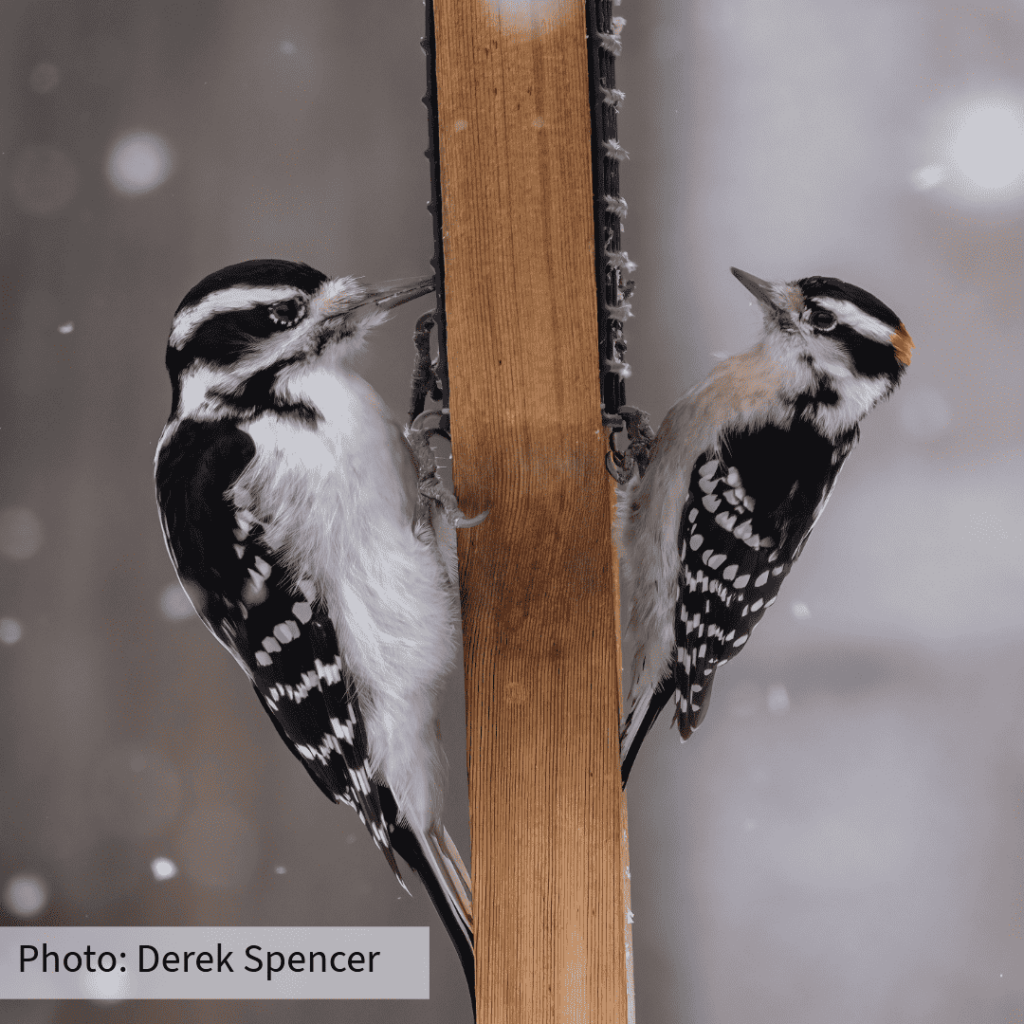
You often won’t be lucky enough to see a Hairy and Downy Woodpecker at the exact same time, which is why the measuring trick is super handy! Notice that the bill on the Hairy Woodpecker is almost the same length as its head, while the Downy Woodpecker’s bill is around one third the length of its head.
Try to figure out which of the birds below are Hairy Woodpeckers and which are Downy Woodpeckers. When you’re ready click “Which is which?” for the answer.
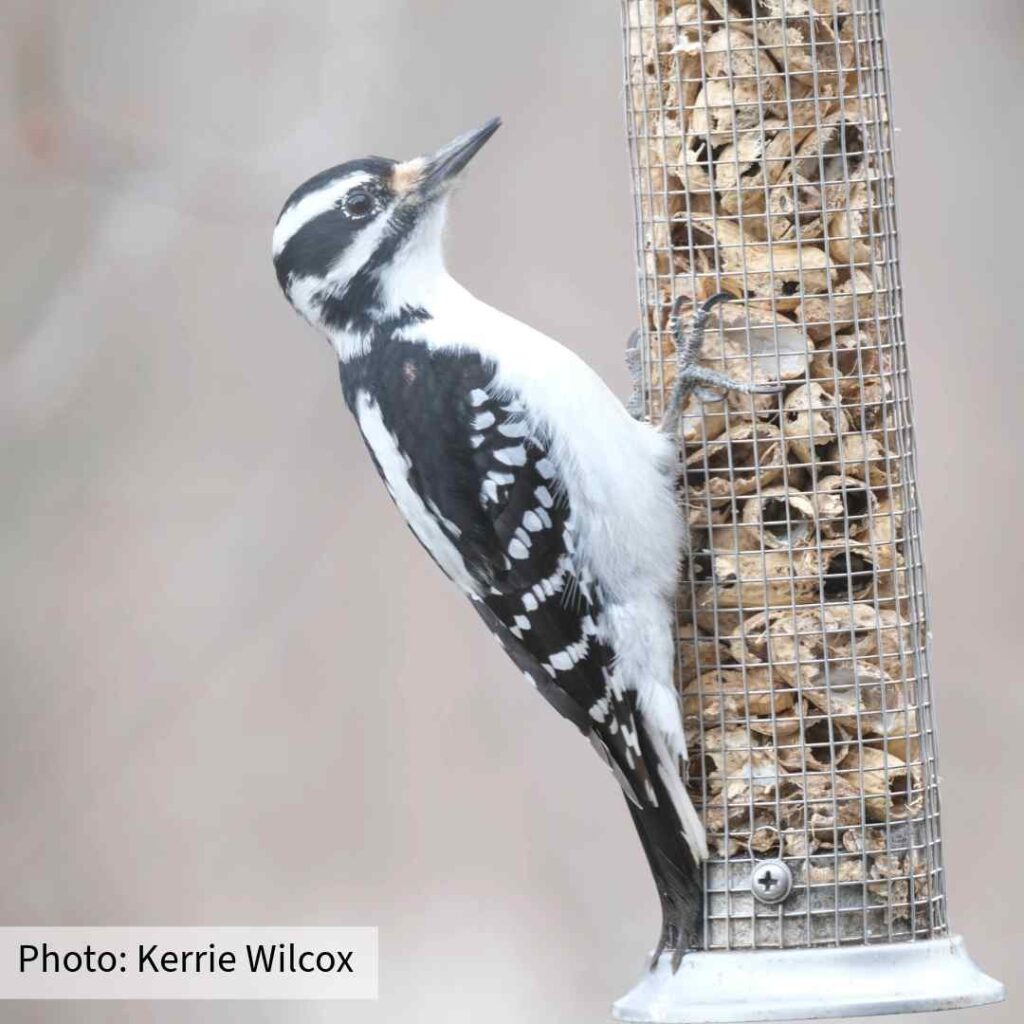
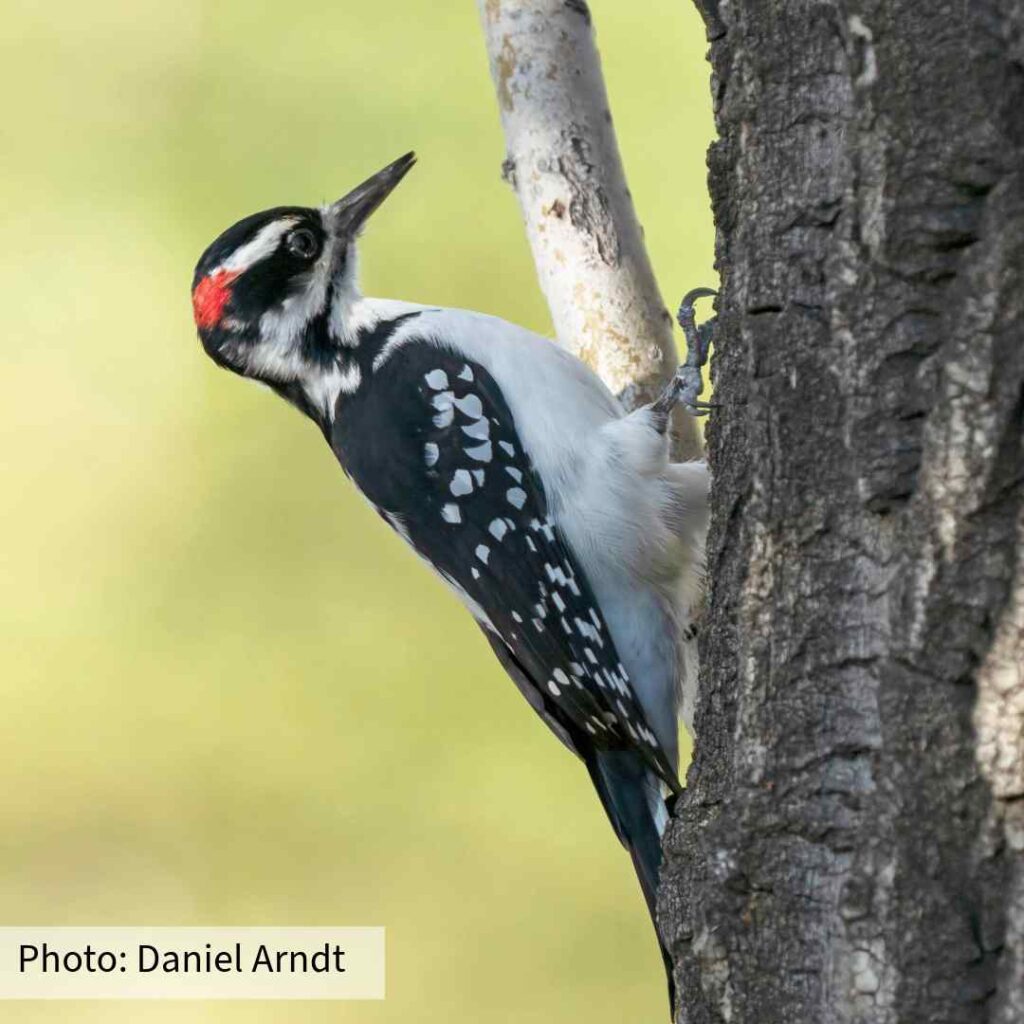
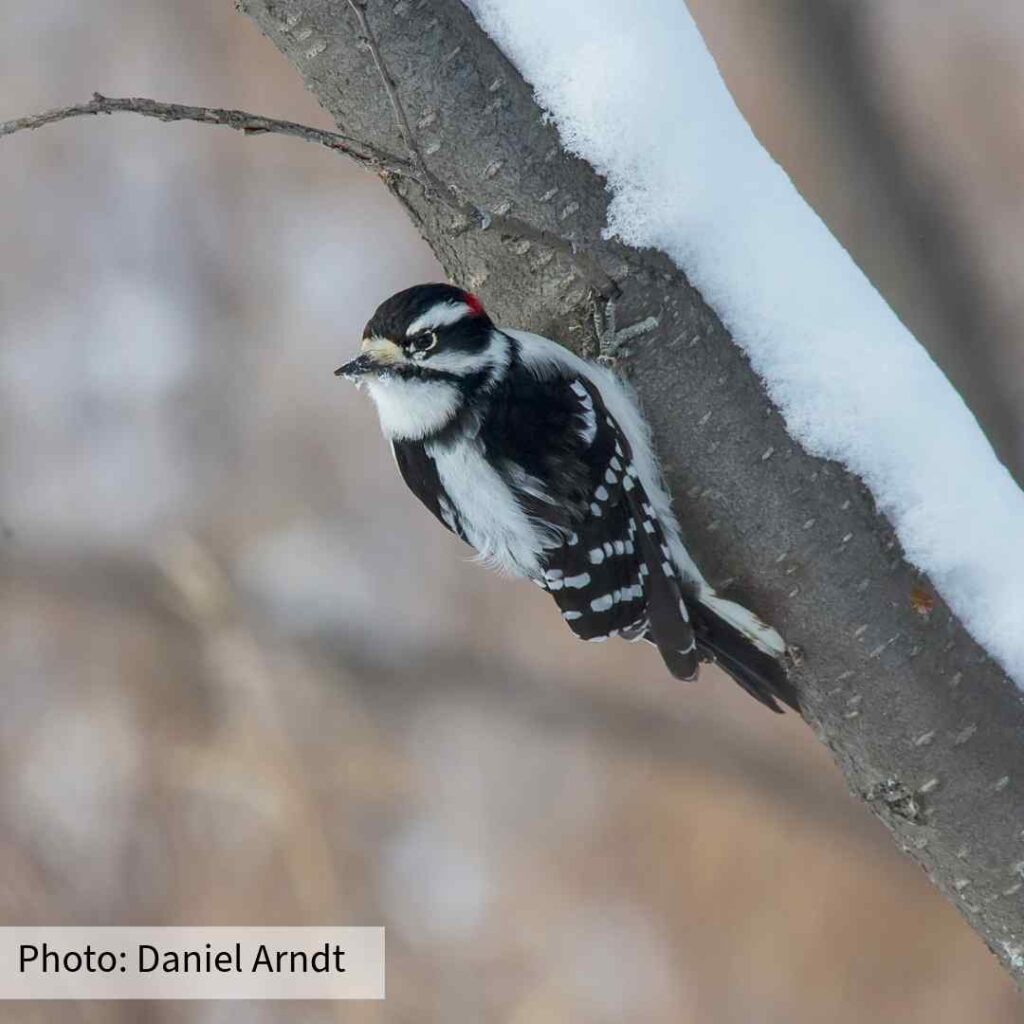
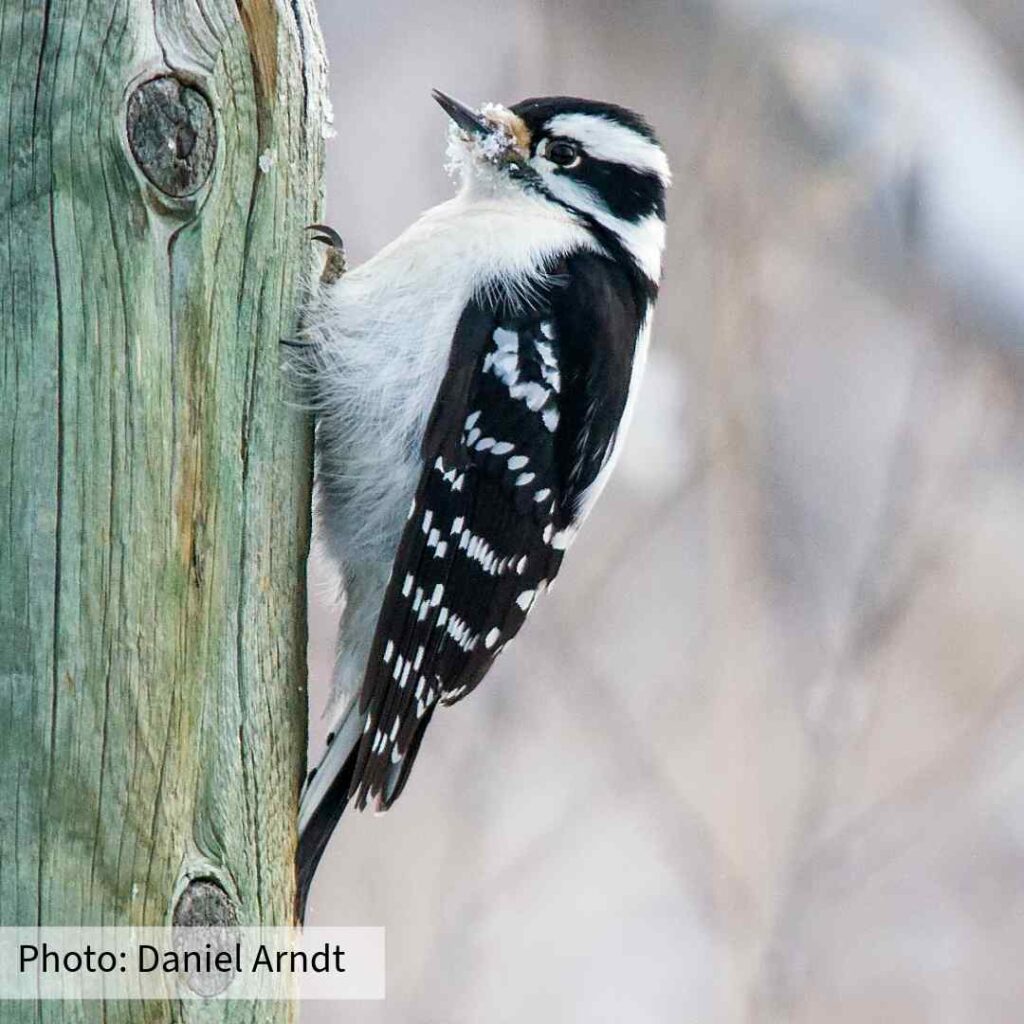
Which is which?
The first two images are Hairy Woodpeckers, while the last two are Downy Woodpeckers.
A final thing to remember when looking at shape, is that some species might change their shape. Notice how the Great Blue Heron changes its shape significantly in the images below. Another example is how the iconic crest on a Blue Jay may not always be standing up straight. On a cold day, even a Black-capped Chickadee might look a lot more round as it puffs up its feathers to stay warm.
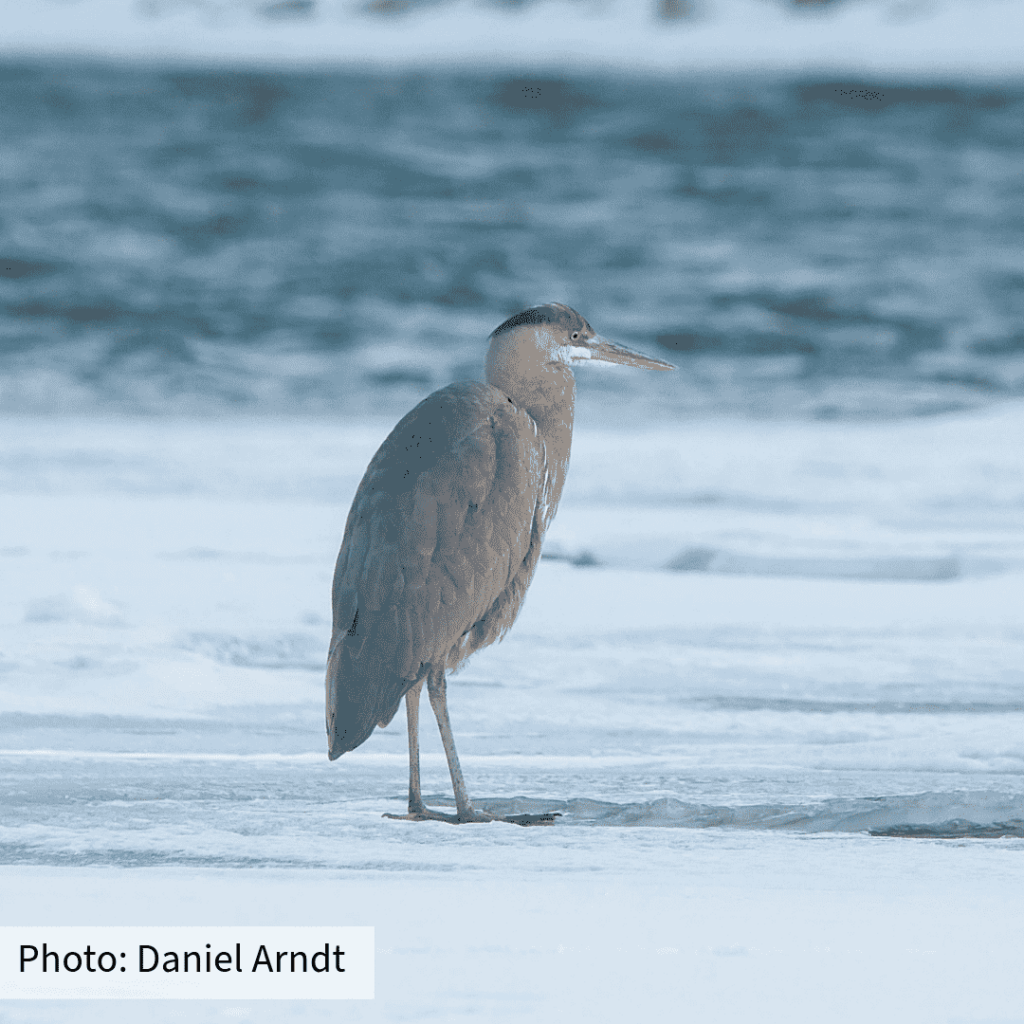
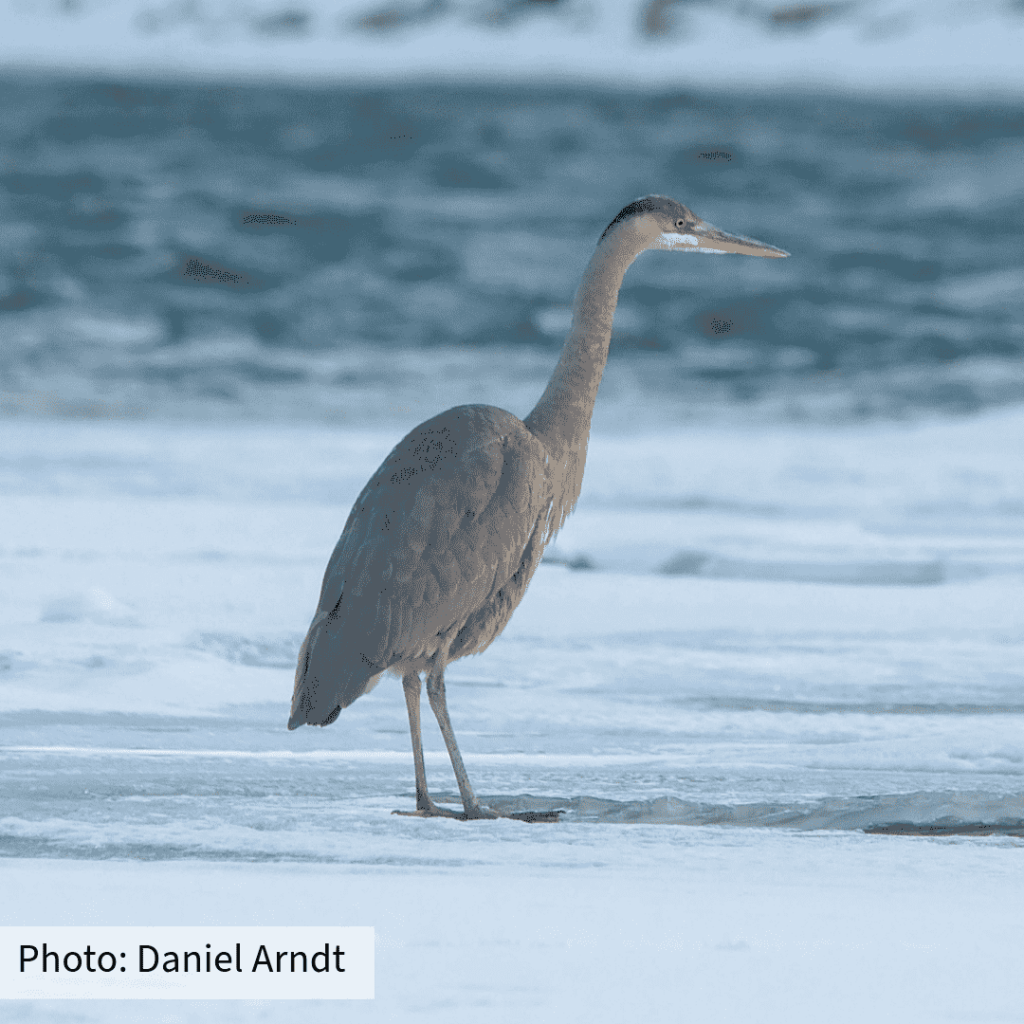
Size and shape are great starting points for identifying birds!
Try spotting a bird out the window right now or the next time you are outside. Even if it is a species you are familiar with, try making observations about its size and shape and focus less on colour and behaviour. Ask yourself questions like:
- How long is its tail compared to the rest of its body?
- What shape is the beak? Does it have a curve? Is it thin or thick?
- Is the bird smaller than a robin? Or larger than a crow?
If it’s soaring overhead, you might notice the shape of its tail feathers or the length of the wings compared to the rest of the body.
You’re off to a great start!

